Articles
- Page Path
- HOME > J Musculoskelet Trauma > Volume 33(2); 2020 > Article
- Case Report Intraspinal Extradural Cyst Subsequent to a Vertebral Compression Fracture - A Case Report -
- Byeong Yeol Choi, Jong Eon Choi
-
Journal of Musculoskeletal Trauma 2020;33(2):105-109.
DOI: https://doi.org/10.12671/jkfs.2020.33.2.105
Published online: April 30, 2020

- 370 Views
- 0 Download
- 0 Crossref
- 0 Scopus
Abstract
Although a rare entity, intraspinal extradural cyst can cause severe deficit via neural compression. After reviewing available literature, the authors report a rare case of cord compression by intraspinal extradural cystic mass that developed after an osteoporotic vertebral compression fracture. An 80-year-old female patient had undergone vertebroplasty for osteoporotic vertebral compression fracture of T12, subsequent to a minor fall. However, the patient complained about sustained pain and progressive weakness of lower extremities even after the procedure. Follow-up magnetic resonance imaging revealed an intraspinal extradural cystic lesion compressing the spinal cord, and the patient had to undergo a surgical intervention via the posterior approach. Symptoms were relieved postoperatively, with no recurrence during the 1-year follow-up.
Published online Apr 28, 2020.
https://doi.org/10.12671/jkfs.2020.33.2.105
Intraspinal Extradural Cyst Subsequent to a Vertebral Compression Fracture: A Case Report
 , M.D.,
and Jong Eon Choi
, M.D.,
and Jong Eon Choi , M.D.
, M.D.
Abstract
Although a rare entity, intraspinal extradural cyst can cause severe deficit via neural compression. After reviewing available literature, the authors report a rare case of cord compression by intraspinal extradural cystic mass that developed after an osteoporotic vertebral compression fracture. An 80-year-old female patient had undergone vertebroplasty for osteoporotic vertebral compression fracture of T12, subsequent to a minor fall. However, the patient complained about sustained pain and progressive weakness of lower extremities even after the procedure. Follow-up magnetic resonance imaging revealed an intraspinal extradural cystic lesion compressing the spinal cord, and the patient had to undergo a surgical intervention via the posterior approach. Symptoms were relieved postoperatively, with no recurrence during the 1-year follow-up.
Fig. 1
T2-weighted sagittal magnetic resonance image shows acute compression fracture at T12 (arrow).
Fig. 2
Lumbar lateral radiograph showing augmented T12 vertebra with bone cement (arrow).
Fig. 3
T2-weighted sagittal (A) and axial (B) magnetic resonance images reveal a large septated cystic mass in the anterior extradural space (arrows).
Fig. 4
Postmyelography computed tomography scan demonstrate that the cyst is not communicating with dural sac.
Fig. 5
An intraoperative image showing the cyst (arrow) at the ventral side of the dural sac.
Fig. 6
Histologic image shows reactive fibrous connective tissue without epithelial lining cells, compatible with pseudomembrane (H&E, × 100).
Fig. 7
Follow-up T2-weighted sagittal (A) and axial (B) magnetic resonance images at 1-year after surgery show complete removal of cyst and no recurrence.
Financial support:None.
Conflict of interests:None.
References
-
Toyama Y, Kamata N, Matsumoto M, et al. Pathogenesis and diagnostic title of intraspinal cyst communicating with intervertebral disc in the lumbar spine. Rinsho Seikei Geka 1997;32:393–400.
-

 E-submission
E-submission KOTA
KOTA TOTA
TOTA TOTS
TOTS
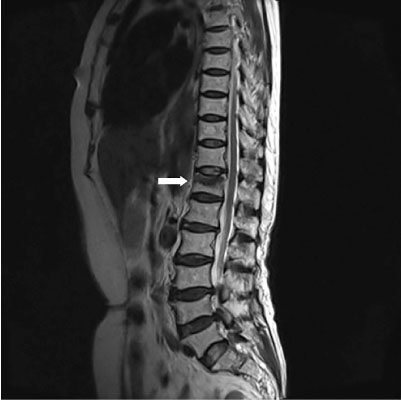
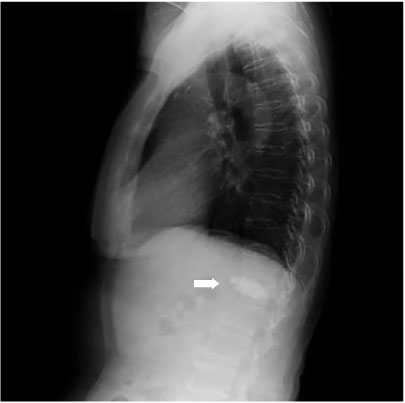
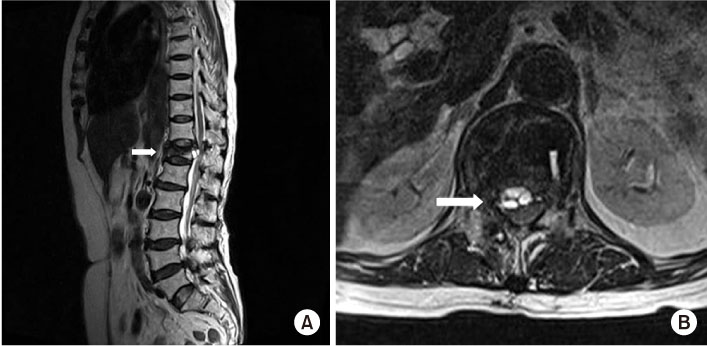
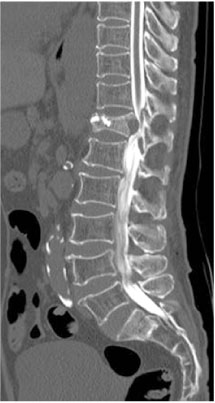
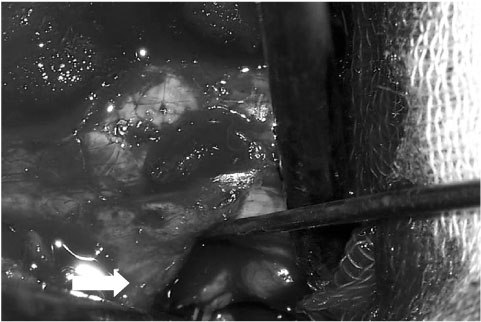
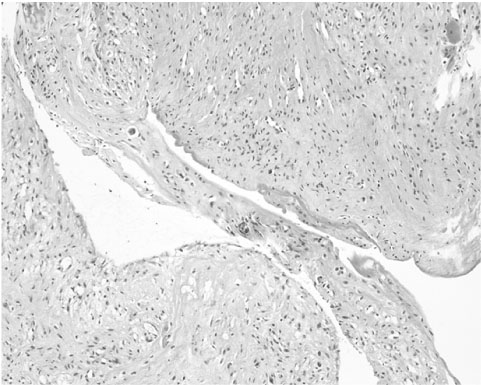
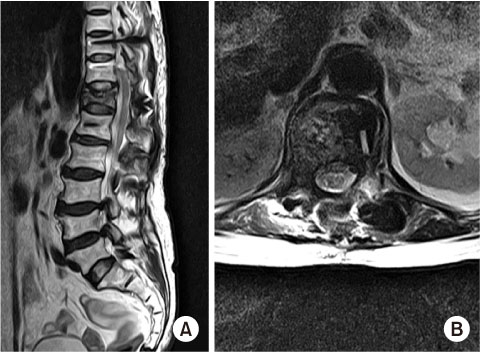

 Cite
Cite

